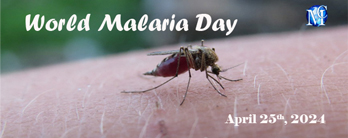Journal of
eISSN: 2373-6453


Gene therapy is a treatment method that uses therapeutic gene(s) to treat or prevent diseases. In the future, doctors may treat a disease by inserting a gene into patient’s cells instead of using conventional drugs or surgery. Currently researchers and clinicians are testing several approaches of gene therapy of genetic diseases including: replacing a mutated gene that causes disease with a normal copy of the gene, inactivating or “knocking out” a mutated gene that is functioning improperly, and introducing a new normal gene into the body to help fight a disease. Although gene therapy is a promising treatment option for a number inherited and genetic diseases, the therapy remains risky and is still under investigation to make sure that it will be safe and effective. Gene therapy is currently only being tested for treating the diseases that have no other treatments.
Viruses naturally possess specialized molecular mechanisms to efficiently transfer their genetic materials into the infected cells. Viral vectors can be used to modify specific cell type or tissue and can be directed to express therapeutic genes. These unique abilities made them desirable for engineering viral vectors to deliver the therapeutic genes. The efficient delivery of therapeutic genes and correct gene expression are important for clinically relevant gene therapy. The most commonly used viral vectors are derived from retroviruses, adenoviruses, and adeno associated viruses (AAV). Gene therapy has a turbulent history because of failure of the first clinical trial. Jesse Gelsinger1 who was suffering from a partial deficiency of ornithine trans carbamyalse (OTC), took part in a gene therapy clinical trial at the University of Pennsylvania, Philadelphia. Due to immune responses caused by a high dose of adenoviral vector containing OTC, Gelsinger died four days later because of multi-organ failure.1 In another clinical trial conducted in France and UK, among twenty X-linked severe combined immunodeficiency disease (X-SCID) patients, 19 were successfully cured their immunodeficiency by retroviral vector containing IL-2RG (gc). Four of the treated patients developed T cell leukemia because the gamma retrovirus integrated in/near the proto-oncogenes that turned the gene on. But the patients were successfully treated with chemotherapy and in complete remission.2
Viral vectors for gene therapy have to overcome several hurdles such as inactivation of vectors by the neutralizing antibodies, off-site targeting of the vectors, insertional mutagenesis of the integrating vectors which can turn on proto-oncogenes or turn off tumor suppressor genes, etc. Currently physicians and researchers are conducting gene therapy clinical trials utilizing vectors with improved safety features such as replication incompetent vectors, self-inactivated vectors, pseudo typed vectors, hybrid vectors, etc. Viral vectors such as AAV and human immunodeficiency virus (HIV)-based lentivirus, are showing great promise as a gene therapy tool. AAV vectors have been used in over 117 clinical trials worldwide and promising results have been obtained from Phase 1 and Phase 2 trials for a number of diseases, including Leber's Congenital Amaurosis,3 hemophilia,4 lipoprotein lipase deficiency,5 and congestive heart failure.6 Lentivirus vectors has been used in over 101 clinical trials globally and successfully used to cure diseases such as beta-thalassemia,7 cerebral adenoleukodystrophy,8 and metachromatic leukodystrophy.9
Although non-viral vector systems such as lipid-mediated vectors, hydrodynamic delivery, and the gene gun have been advocated and tried. But none of them have approached the efficacy of the viral vector delivery systems. Despite some problems encountered by viral vectors in gene therapy clinical trials in the past, rationally designed viral vectors will be good delivery vehicles for gene therapy of human genetic diseases and will cure hundreds of thousands of patients world-wide.
None.
None.

© . This is an open access article distributed under the terms of the, which permits unrestricted use, distribution, and build upon your work non-commercially.
 World Malaria Day, observed annually on April 25SUP>th. The purpose of this day is to raise awareness about the global struggle to combat malaria, highlighting the need for continued research, prevention, and treatment strategies to eradicate this deadly disease. So, it is an opportunity to all the researchers to submit your interesting papers on raising the approachability on modern vaccine development, advances in disease control, prevention and eradication and the submissions received till April 25th, 2024 will be offered a best discount of 30% for publication in Journal of Human Virology & Retro virology.
World Malaria Day, observed annually on April 25SUP>th. The purpose of this day is to raise awareness about the global struggle to combat malaria, highlighting the need for continued research, prevention, and treatment strategies to eradicate this deadly disease. So, it is an opportunity to all the researchers to submit your interesting papers on raising the approachability on modern vaccine development, advances in disease control, prevention and eradication and the submissions received till April 25th, 2024 will be offered a best discount of 30% for publication in Journal of Human Virology & Retro virology.